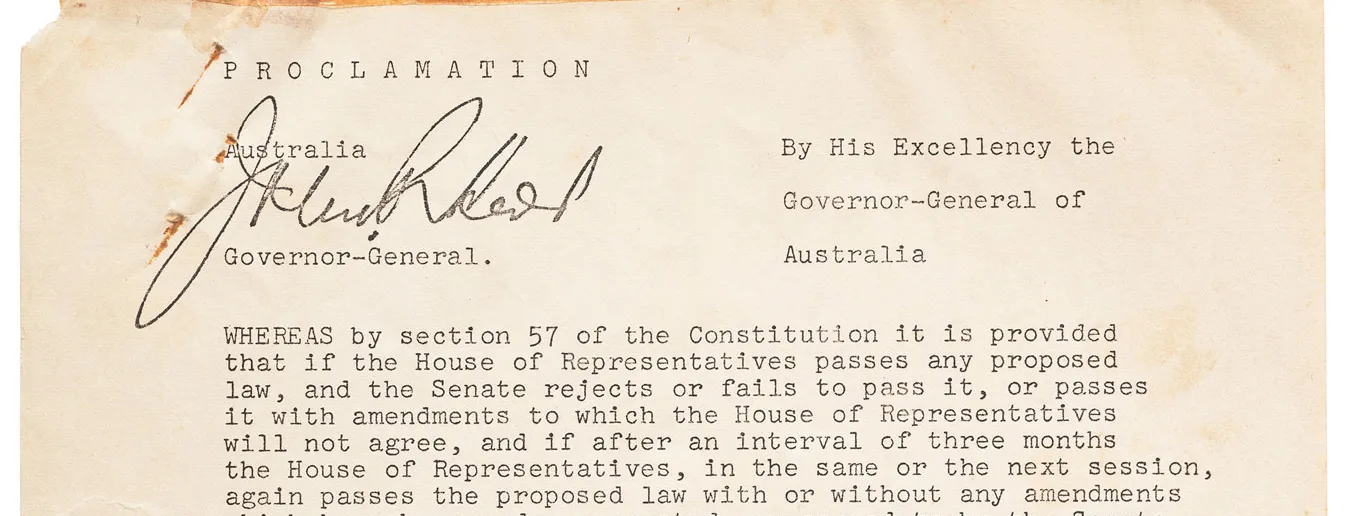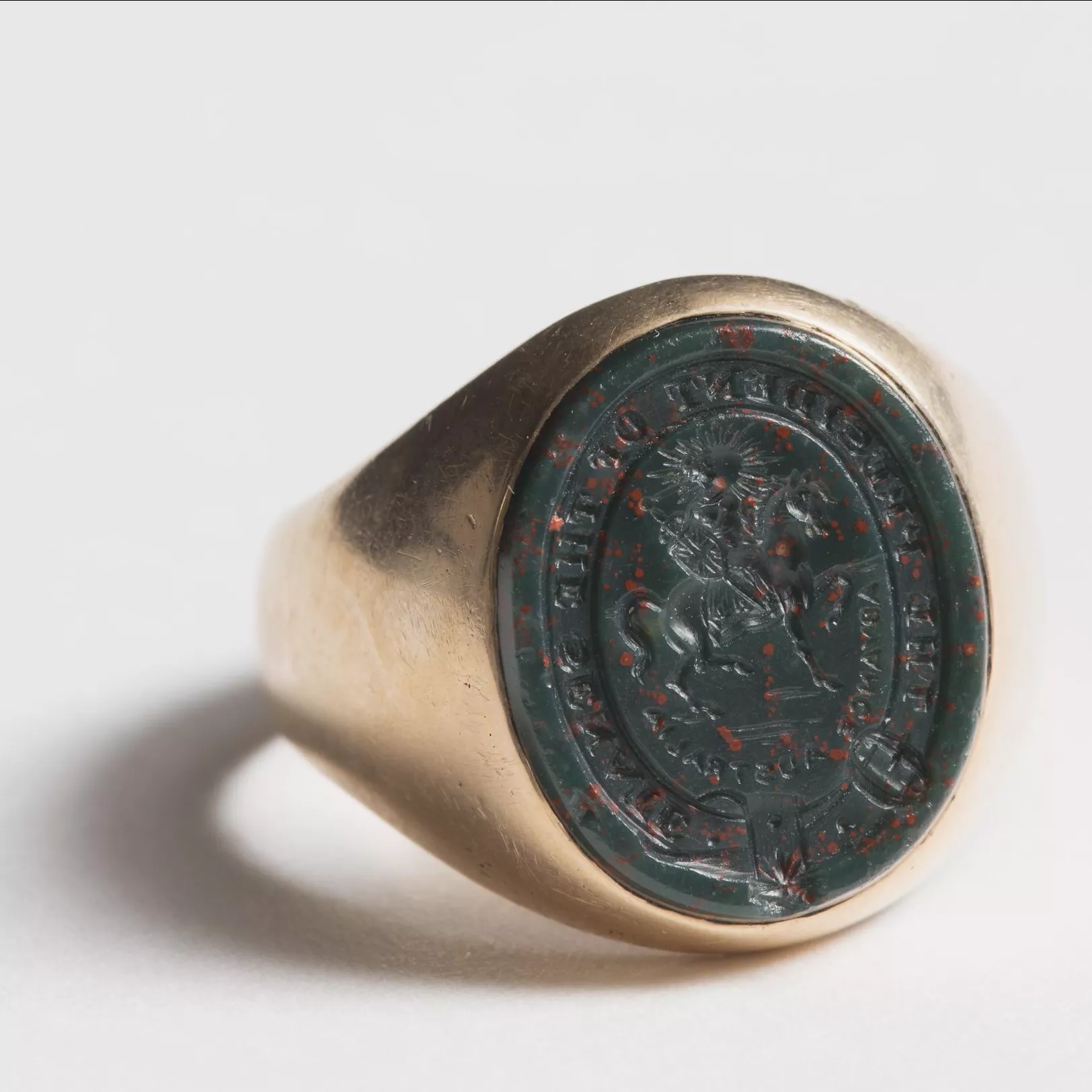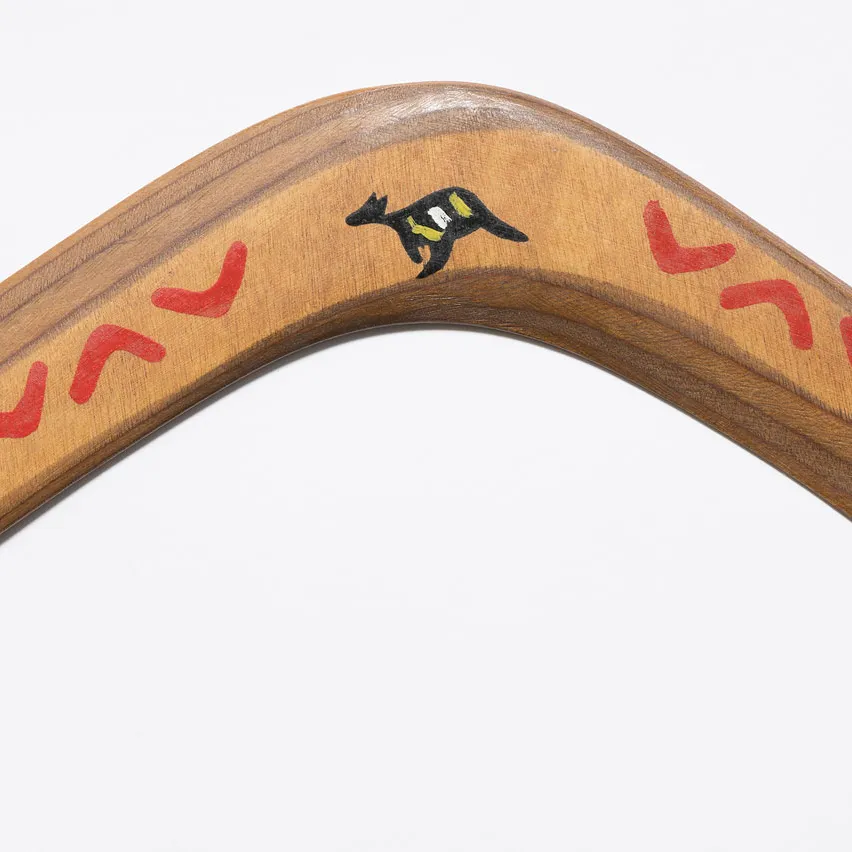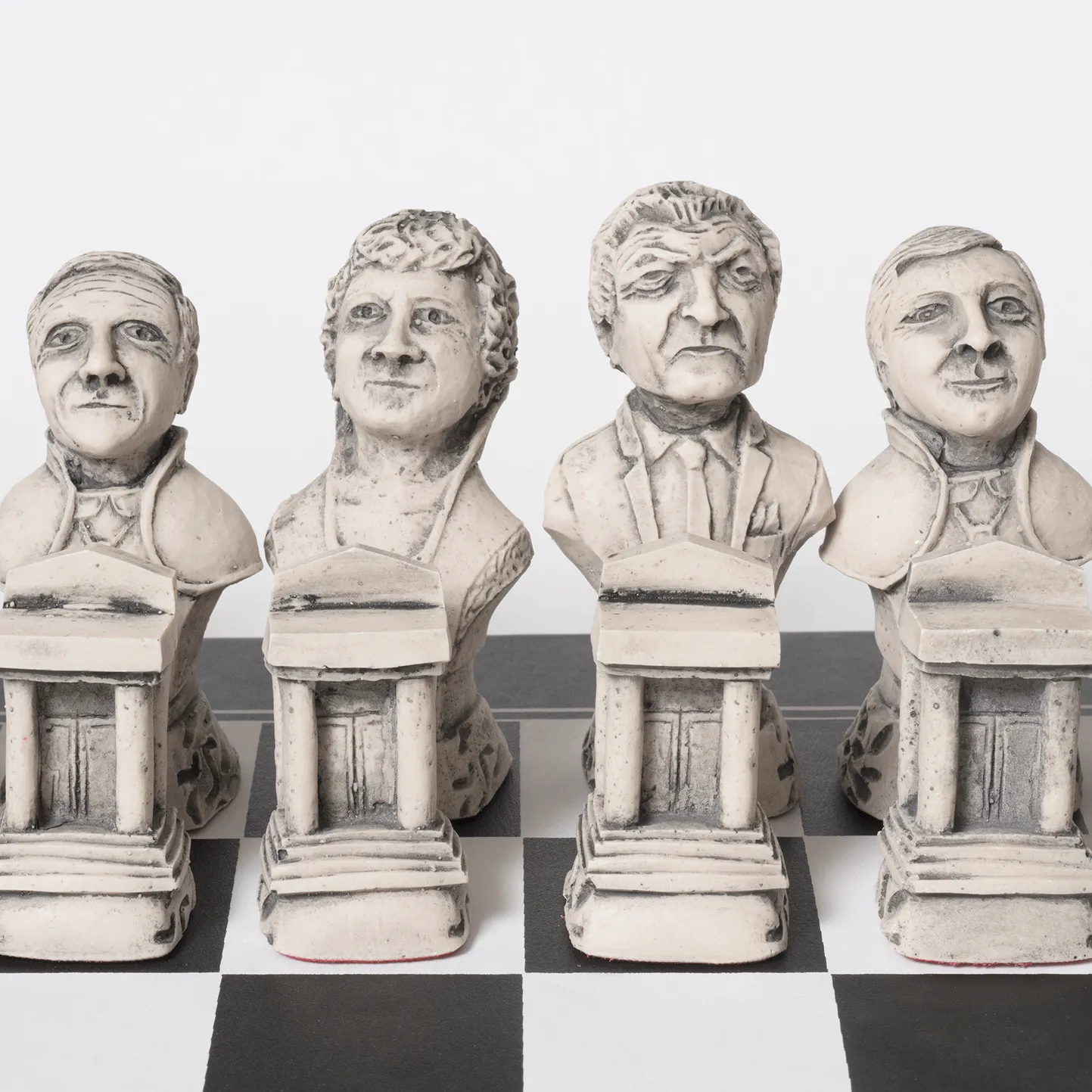Proclamation dissolving the parliament, 1975
Proclaiming the dismissal.
This document is one of two copies of the proclamation from Governor-General Sir John Kerr that was placed on the doors of the House of Representatives and the Senate on 11 November 1975, following the dismissal of the Whitlam government and the dissolution of parliament.


The first page of a copy of the proclamation from Governor-General Sir John Kerr dissolving parliament in 1975.

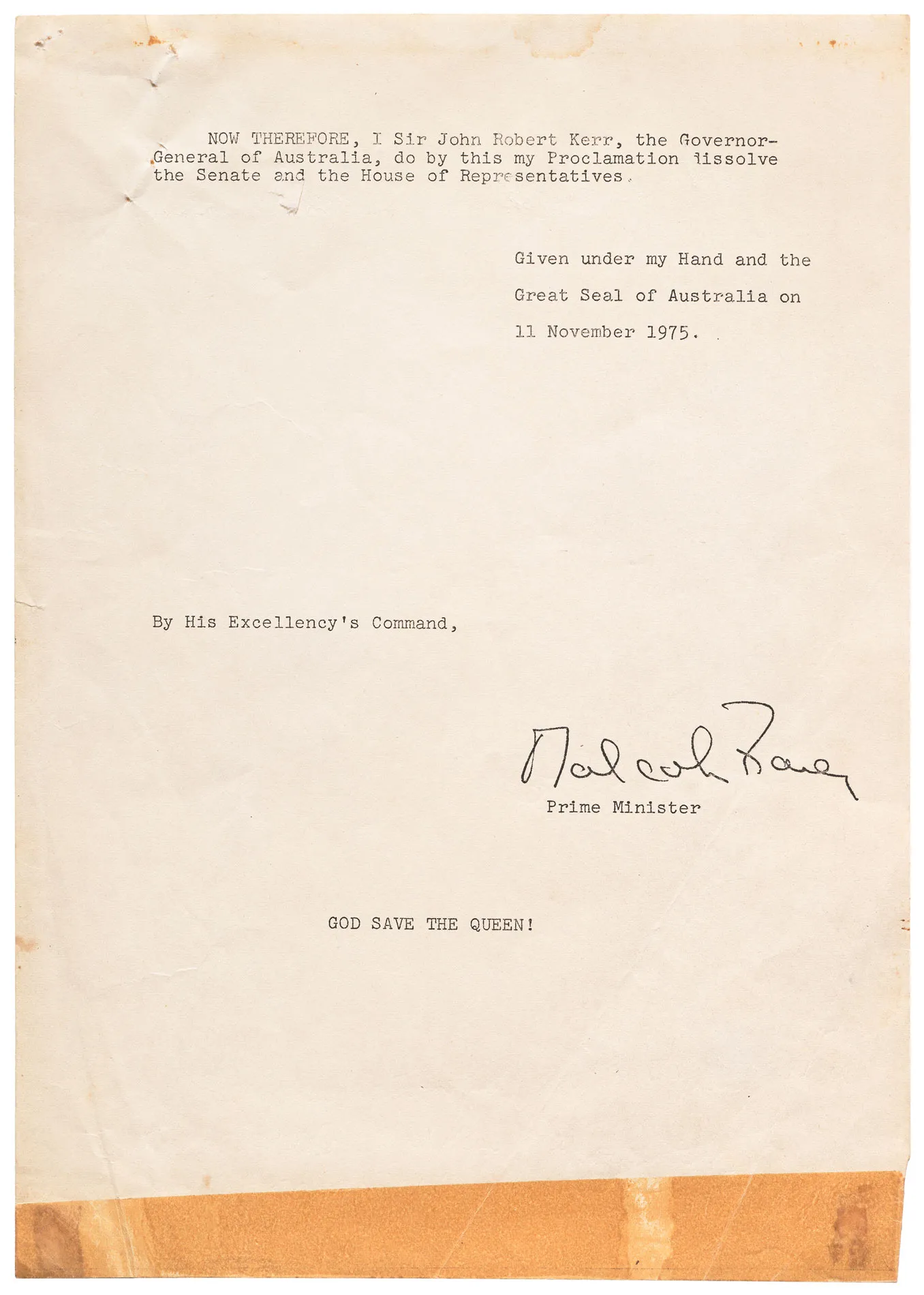
The second page of a copy of the proclamation from Governor-General Sir John Kerr dissolving parliament in 1975.
The proclamation was read aloud on the front steps of Parliament House by the Governor-General's Official Secretary, Sir David Smith. A crowd had gathered, mostly supporters of Whitlam's Australian Labor Party, who jeered and booed as Smith read the document in front of cameras. Whitlam's replacement as prime minister, Malcolm Fraser, had countersigned the petition, leading Whitlam to dub him 'Kerr's cur'.
The proclamation ends with 'God save the Queen' (a phrase Whitlam had removed from similar documents since his appointment). Whitlam, who was right behind Smith on the front steps, then retorted with his famous words, 'Well may we say, "God save the Queen", because nothing will save the Governor-General.'
It is not known who placed the copies of the proclamation on the doors of the Chambers, but we do know who took them down. Donald Cameron, a Liberal politician, recognised the historic, unprecedented nature of the dismissal, and so took the documents to preserve them. Photocopies were then put up in their place. Cameron's explanation for taking them is handwritten at the bottom of the front page of the House of Representatives copy.
The dismissal caught most parliamentarians by surprise, including Whitlam. Fraser likely knew what was about to happen at least since that morning, but Whitlam had no inkling, believing the mere prospect impossible. Fraser announced his appointment in the House at 2pm from the Opposition benches – the only time until that date that government members have sat on the Speaker's left.
Fraser had been commissioned in a caretaker capacity on condition he pass the budget bills, which since October had been stalled in the Opposition-controlled Senate. Once commissioned as prime minister, Fraser told only his close advisers what had happened – most of his party room did not know.
Following Fraser's announcement, the House passed a motion of no-confidence in his government and called for Whitlam's reinstatement. However, by the time this news was delivered to Kerr, parliament had already been dissolved.
Proclamations are one way government business is conducted. They are a very old tradition, probably as old as government itself – there are examples of ancient kings and emperors making proclamations on various matters, with their decrees then issued in writing, or perhaps engraved in stone. In the Westminster tradition, which Australia inherited from the United Kingdom, proclamations are issued by the Crown, or the Crown's representative, and usually relate to dissolutions and summoning of new parliaments, awarding of honours, or declaring public holidays.
What was the dismissal?
On 11 November 1975, Australia's governor-general, Sir John Kerr, dissolved parliament and terminated Gough Whitlam's appointment as prime minister of Australia. Kerr appointed the leader of the Opposition, Malcolm Fraser, in his place. The dismissal was a serious constitutional crisis. Read more about the dismissal
Are these proclamations common?
Proclamations like this are issued with every dissolution of parliament. According to Section 28 of the Constitution, the House of Representatives is automatically dissolved three years from its first meeting after an election. However, the governor-general may dissolve the House of Representatives earlier, which, by convention, is only done on the advice of the prime minister. Most dissolutions are only of the House, with half the Senate elected for a term beginning on 1 July every six years. However, in 1975 and on six other occasions, a double dissolution was held. In these cases, the entire parliament was dissolved, always because of a deadlock between the two houses.
These proclamations are usually mundane, administrative documents. Only in 1975 was a proclamation the focus of so much media attention due to the unusual circumstances.
Who was Sir David Smith?
Sir David Iser Smith (1933-2022) was Official Secretary to the Governor-General from 1973 to 1990. While he most famously worked for Sir John Kerr, Smith served five different governors-general during his tenure. As Official Secretary, it was Smith's job to read proclamations dissolving the parliament, and his 1975 reading on the front steps of Parliament House became an iconic moment in Australia's history. Smith was knighted in 1990 by Queen Elizabeth II, who bestowed the knighthood personally instead of on the advice of the Australian government. After his retirement he worked as a volunteer guide at Old Parliament House and wrote extensively on Australia's Constitution and the British monarchy.
Who was Donald Cameron?
Donald (Don) Milner Cameron (b.1940) was a Liberal member of the House of Representatives from 1966 to 1990, with a short break in 1983. A Brisbanite, Cameron was one of the youngest members when first elected, aged just 26, and supported the Labor government's move to lower the voting age from 21 to 18 in 1973. Cameron was made a Member of the Order of Australia (AM) in 2000 for services to parliament and to youth.

